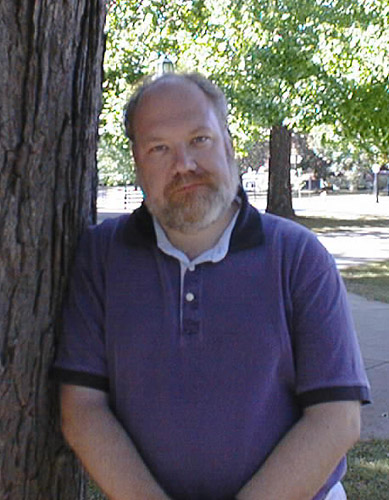|
My UW
|
UW Search
Computer Science Home Page
|
 |
| |

Computer Security and Cryptography Reading Group
March 2005 List
Thursday, March 3, 2005
2 PM - 3 PM
7331 CS
|
 S.C. Bono
S.C. Bono
 M.D. Green
M.D. Green
 A. Stubblefield
A. Stubblefield
 A. Rubin
A. Rubin
 A. Juels
A. Juels
 M. Szydlo
M. Szydlo
S.C. Bono, M.D. Green, A. Stubblefield, A. Rubin, A. Juels, M. Szydlo
Johns Hopkins University / RSA Laboratories
Security Analysis of a Cryptographically-Enabled RFID Device
URL: http://rfidanalysis.org/DSTbreak.pdf
We describe our success in defeating the security of
an RFID device known as a Digital Signature
Transponder (DST). Manufactured by Texas
Instruments, DST (and variant) devices help secure
millions of SpeedPassTM payment transponders and
automobile ignition keys. Our analysis of the DST
involved three phases:
-
Reverse engineering: Starting from a rough
published schematic, we determined the complete
functional details of the cipher underpinning the
challenge-response protocol in the DST. We
accomplished this with only “oracle” or
“black-box” access to an ordinary DST, that is, by
experimental observation of responses output by
the device.
-
Key cracking: The key length for the DST is only
40 bits. With an array of of sixteen FPGAs
operating in parallel, we can recover a DST key in
under an hour using two responses to arbitrary
challenges.
-
Simulation: Given the key (and serial number) of a
DST, we are able to simulate its RF output so as
to spoof a reader. As validation of our results,
we purchased gasoline at a service station and
started an automobile using simulated DST devices.
We accomplished all of these steps using inexpensive
off-the-shelf equipment, and with minimal RF
expertise. This suggests that an attacker with
modest resources can emulate a target DST after
brief short-range scanning or long-range
eavesdropping across several authentication
sessions. We conclude that the cryptographic
protection afforded by the DST device is relatively
weak.
|
Thursday, March 10, 2005
2 PM - 3 PM
7331 CS
|
 R. Gopalakrishna
R. Gopalakrishna
 E.H. Spafford
E.H. Spafford
 J. Vitek
J. Vitek
R. Gopalakrishna, E.H. Spafford, J. Vitek
Purdue
Efficient Intrusion Detection using Automaton Inlining
Oakland'05
URL: http://www.cs.wisc.edu/areas/sec/gopalakrishnar_automaton.pdf
Host-based intrusion detection systems attempt to
identify attacks by discovering program behaviors
that deviate from expected patterns. While the idea
of performing behavior validation on-the-fly and
terminating errant tasks as soon as a violation is
detected is appealing, existing systems exhibit
serious shortcomings in terms of accuracy and/or
efficiency. To gain acceptance, a number of
technical advances are needed. In this paper we
focus on automated, conservative, intrusion
detection techniques, i.e. techniques which do not
require human intervention and do not suffer from
false positives.
We present a static analysis algorithm for
constructing a flow- and context-sensitive model of
a program that allows for efficient online
validation. Context-sensitivity is essential to
reduce the number of impossible control-flow paths
accepted by the intrusion detection system because
such paths provide opportunities for attackers to
evade detection. An important consideration for
on-the-fly intrusion detection is to reduce the
performance overhead caused by monitoring. Compared
to the existing approaches, our inlined automaton
model (IAM) presents a good tradeoff between
accuracy and performance. On a 32K line program, the
monitoring overhead is negligible. While the space
requirements of a naive IAM implementation can be
quite high, compaction techniques can be employed to
substantially reduce that footprint.
|
Thursday, March 17, 2005
2 PM - 3 PM
7331 CS
|
 T. Kohno
T. Kohno
 kc claffy
kc claffy
T. Kohno, A. Broido, kc claffy
UCSD / CAIDA
Remote physical device fingerprinting
Oakland'05
URL: http://www.cse.ucsd.edu/users/tkohno/papers/PDF/
We introduce the area of remote physical device
fingerprinting, or fingerprinting a physical
device, as opposed to an operating system or class
of devices, remotely, and without the fingerprinted
device's known cooperation. We accomplish this goal
by exploiting small, microscopic deviations in
device hardware: clock skews. Our techniques do not
require any modification to the fingerprinted
devices. Our techniques report consistent
measurements when the measurer is thousands of
miles, multiple hops, and tens of milliseconds away
from the fingerprinted device, and when the
fingerprinted device is connected to the Internet
from different locations and via different access
technologies. Further, one can apply our passive and
semi-passive techniques when the fingerprinted
device is behind a NAT or firewall, and also when
the device's system time is maintained via NTP or
SNTP. One can use our techniques to obtain
information about whether two devices on the
Internet, possibly shifted in time or IP addresses,
are actually the same physical device. Example
applications include: computer forensics; tracking,
with some probability, a physical device as it
connects to the Internet from different public
access points; counting the number of devices behind
a NAT even when the devices use constant or random
IP IDs; remotely probing a block of addresses to
determine if the addresses correspond to virtual
hosts, e.g., as part of a virtual honeynet; and
unanonymizing anonymized network traces.
|
Thursday, March 24, 2005
1 PM - 2 PM
5331 CS
|
 J. Newsome
J. Newsome
 B. Karp
B. Karp
 D. Song
D. Song
J. Newsome, B. Karp, D. Song
CMU
Polygraph: Automatically Generating Signatures For Polymorphic Worms
Oakland'05
URL: http://www-2.cs.cmu.edu/~bkarp/polygraph-oakland2005.pdf
It is widely believed that content-signature-based
intrusion detection systems (IDSes) are easily
evaded by polymorphic worms, which vary their
payload on every infection attempt. In this paper,
we present Polygraph, a signature generation system
that successfully produces signatures that match
polymorphic worms. Polygraph generates signatures
that consist of multiple disjoint content
substrings. In doing so, Polygraph leverages our
insight that for a real-world exploit to function
properly, multiple invariant substrings must often
be present in all variants of a payload; these
substrings typically correspond to protocol framing,
return addresses, and in some cases, poorly
obfuscated code. We contribute a definition of the
polymorphic signature generation problem; propose
classes of signature suited for matching polymorphic
worm payloads; and present algorithms for automatic
generation of signatures in these classes. Our
evaluation of these algorithms on a range of
polymorphic worms demonstrates that Polygraph
produces signatures for polymorphic worms that
exhibit low false negatives and false positives.
|
Thursday, March 31, 2005
1 PM - 2 PM
5331 CS
|
 J. Crowcroft
J. Crowcroft
M. Costa, J. Crowcroft, M. Castro, A. Rowstron
MSR Cambridge / U. Cambridge
Can we contain Internet worms?
MSR TR
URL: http://research.microsoft.com/research/pubs/view.aspx?tr_id=788
Worm containment must be automatic because worms can
spread too fast for humans to respond. Recent work
has proposed a network centric approach to automate
worm containment: network traffic is analyzed to
derive a packet classifier that blocks (or
rate-limits) worm propagation. This approach has
fundamental limitations because the analysis has no
information about the application vulnerabilities
exploited by worms. This paper proposes Vigilante, a
new host centric approach for automatic worm
containment that addresses these
limitations. Vigilante relies on collaborative worm
detection at end hosts in the Internet but does not
require hosts to trust each other. Hosts detect
worms by analysing attempts to infect applications
and broadcast self-certifying alerts (SCAs) when
they detect a worm. SCAs are automatically generated
machine-verifiable proofs of vulnerability; they can
be independently and inexpensively verified by any
host. Hosts can use SCAs to generate filters or
patches that prevent infection. We present
preliminary results showing that Vigilante can
effectively contain fast spreading worms that
exploit unknown vulnerabilities.
|
< Back to the Sec & Crypto reading group page
Created and maintained by Mihai Christodorescu ( http://www.cs.wisc.edu/~mihai)
Created: Fri Feb 04 16:32:13 2005
Last modified: Mon May 16 15:03:47 Central Daylight Time 2005
|
|
|
 |
